
By Kasey Cantwell - Web Coordinator, NOAA Office of Ocean Exploration and Research
October 6, 2014
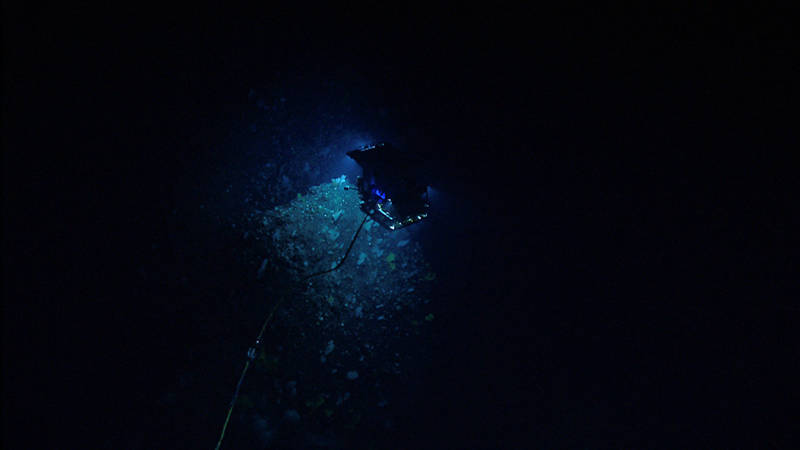
One of my favorite images from the entire cruise, during our dive at Gosnold Seamount, D2 descended on a seafloor densely populated with a diversity of deep-sea corals and sponges. Image courtesy of the NOAA Office of Ocean Exploration and Research, Exploring Atlantic Canyons and Seamounts 2014. Download larger version (jpg, 1.2 MB).
Although I was never really a Little Mermaid fan, I was particularly happy when “Under the Sea” came on my iPod this morning on the way to work. Over the last few weeks, I have been coordinating the web content for Our Deepwater Backyard, which has been really exciting as I have spent the month exploring the deep sea, seeing things that no one has ever seen before!
The hardest part of my job is when I have to decide on which pictures ultimately make their way onto our website. Is it the cute dumbo octopus, the potential new species of sea star, or the weird unidentified organism that stumped our scientists?
I also work with our science team to incorporate as many of my favorite images into their stories as possible. At the end of the day though, remotely operated vehicle (ROV) Deep Discoverer’s incredible cameras and our fantastic team of videographers and ROV pilots often leave me with far too many pictures that may never make their way onto our website. That is where this log comes in—below you will find some of my favorite images that didn’t make it into daily updates or mission logs.
Sebastian definitely got something right: Life under the sea is better than anything they’ve got up there.
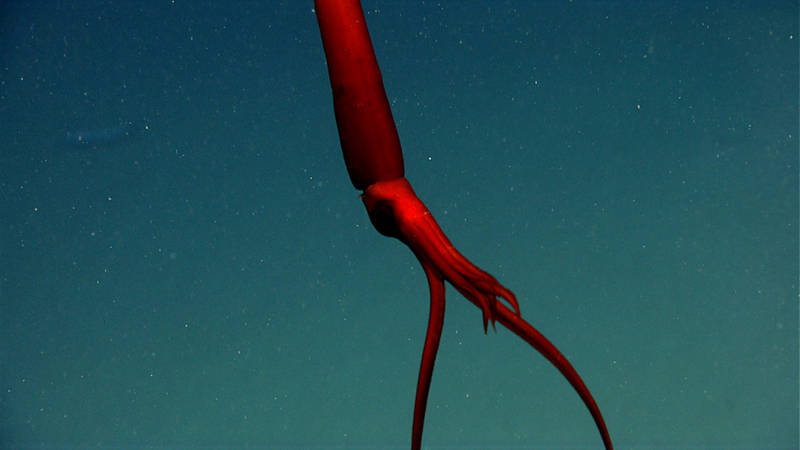
A Whiplash (Mastigoteuthis) squid waits in the water column while hunting in Phoenix Canyon. Image courtesy of the NOAA Office of Ocean Exploration and Research, Exploring Atlantic Canyons and Seamounts 2014. Download larger version (jpg, 1.4 MB).
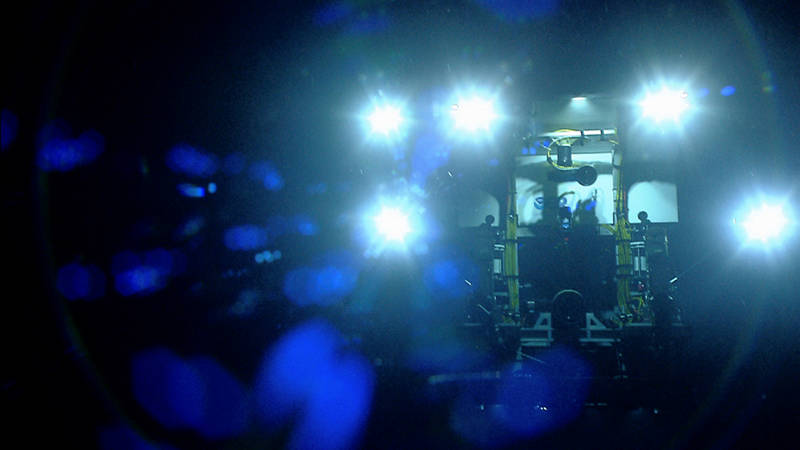
ROV Deep Discoverer as seen in the camera lens of Camera Sled Seirios, as the vehicles leave the seafloor from our last dive of the 2014 field season. Image courtesy of the NOAA Office of Ocean Exploration and Research, Exploring Atlantic Canyons and Seamounts 2014. Download larger version (jpg, 1.2 MB).
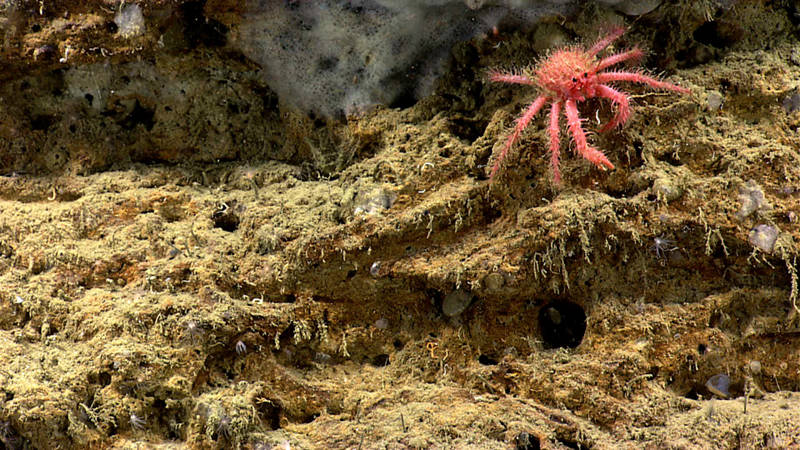
In Phoenix Canyon, we spotted a small juvenile king crab—maybe we can call him a prince crab? Image courtesy of the NOAA Office of Ocean Exploration and Research, Exploring Atlantic Canyons and Seamounts 2014. Download larger version (jpg, 2.0 MB).
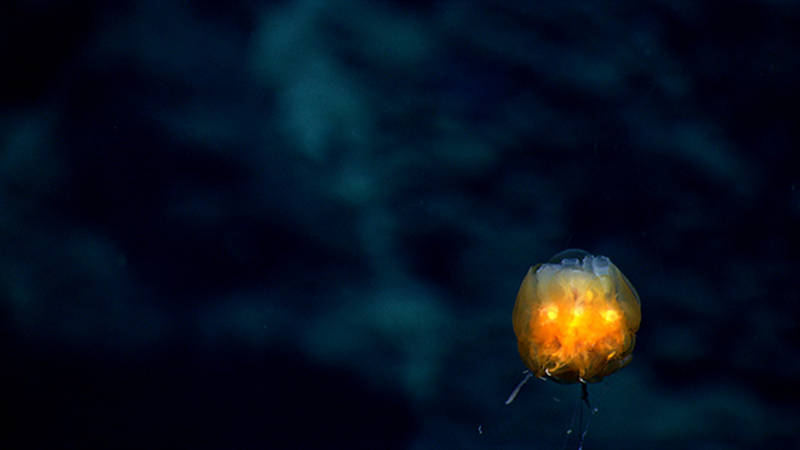
Even though they are rare, we were lucky enough to see dandelion siphonophores on three dives during this expedition. Image courtesy of the NOAA Office of Ocean Exploration and Research, Exploring Atlantic Canyons and Seamounts 2014. Download larger version (jpg, 942 KB).
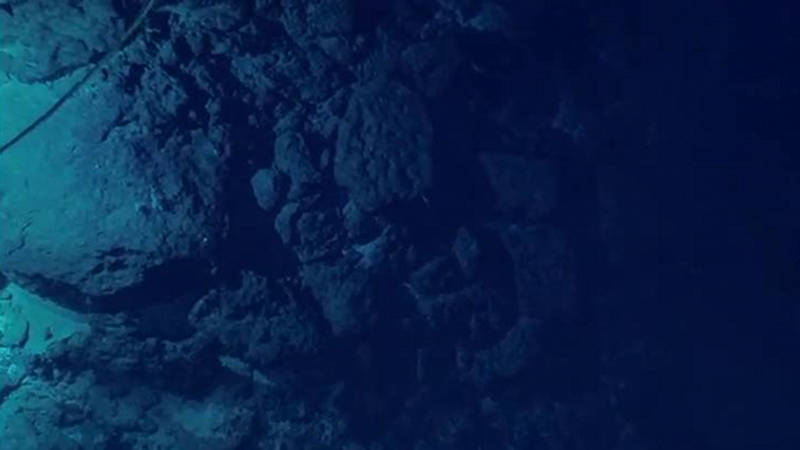
During our dive on the Atlantis II Seamount Complex, we caught a brief glimpse of a vampire squid. Image courtesy of the NOAA Office of Ocean Exploration and Research, Exploring Atlantic Canyons and Seamounts 2014. Download larger version (jpg, 78 KB).
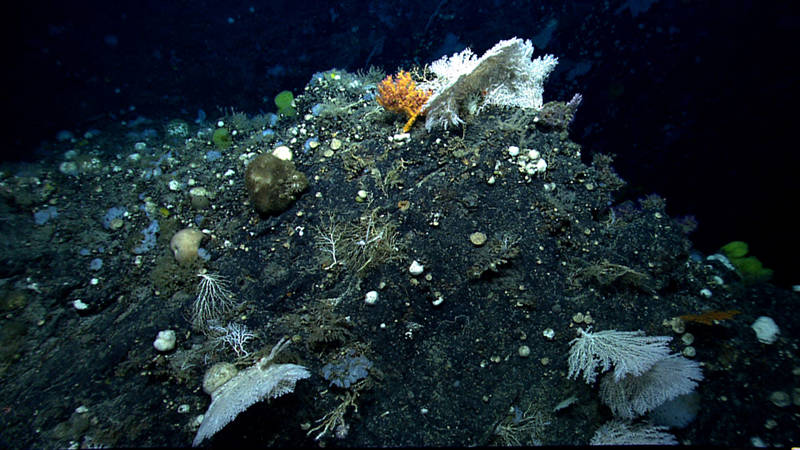
The diversity of deep sea corals and sponges on Gosnold Seamount made it my favorite dive! Here ROV Deep Discoverer documents several sponges, precious corals, and other octocorals on a steep outcrop during our transit upslope. Image courtesy of the NOAA Office of Ocean Exploration and Research, Exploring Atlantic Canyons and Seamounts 2014. Download larger version (jpg, 1.5 MB).
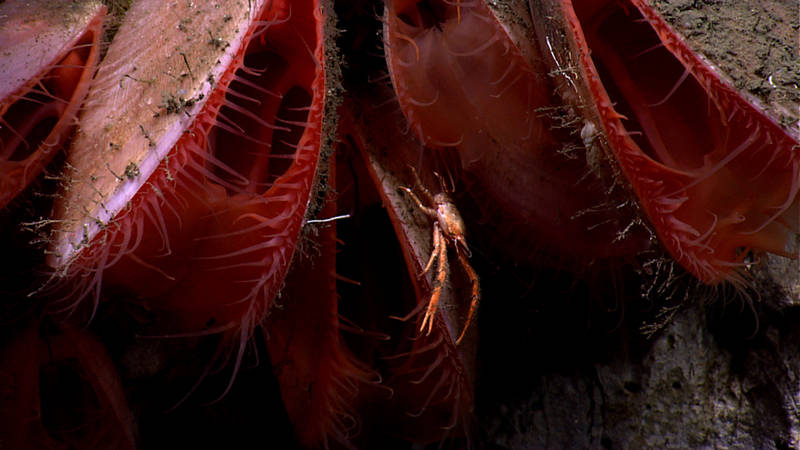
A tiny squat lobster rests in a group of bivalves under a ledge in McMaster Canyon. For scale reference, these bivalves are each about the size of a fist. Image courtesy of the NOAA Office of Ocean Exploration and Research, Exploring Atlantic Canyons and Seamounts 2014. Download larger version (jpg, 1.3 MB).
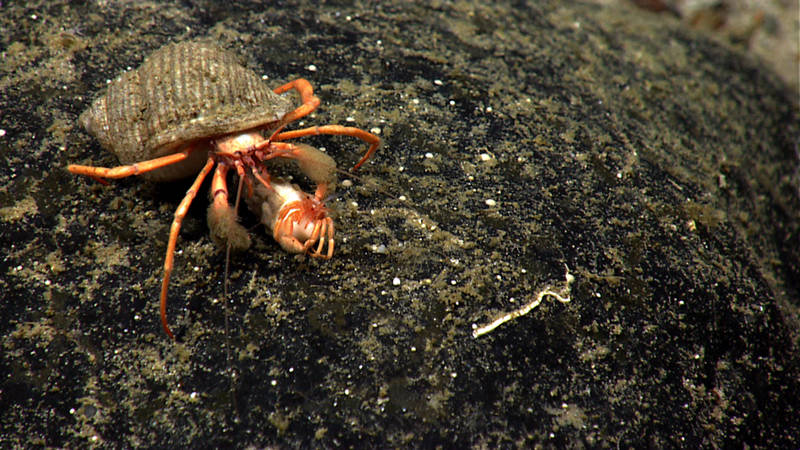
Two hermit crabs on a small boulder on Retriever Seamount. This pair surprised our scientists as these crabs are usually solitary. Image courtesy of the NOAA Office of Ocean Exploration and Research, Exploring Atlantic Canyons and Seamounts 2014. Download larger version (jpg, 1.7 MB).
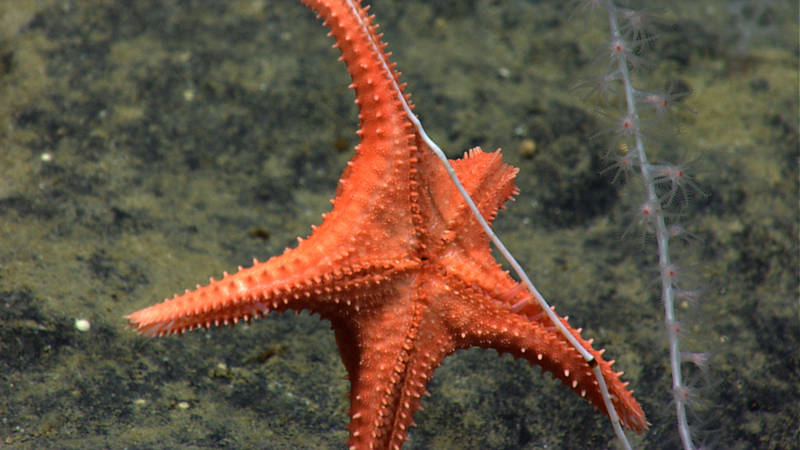
A rarely document instance of sea star predation on bamboo coral. Image courtesy of the NOAA Office of Ocean Exploration and Research, Exploring Atlantic Canyons and Seamounts 2014. Download larger version (jpg, 1.3 MB).
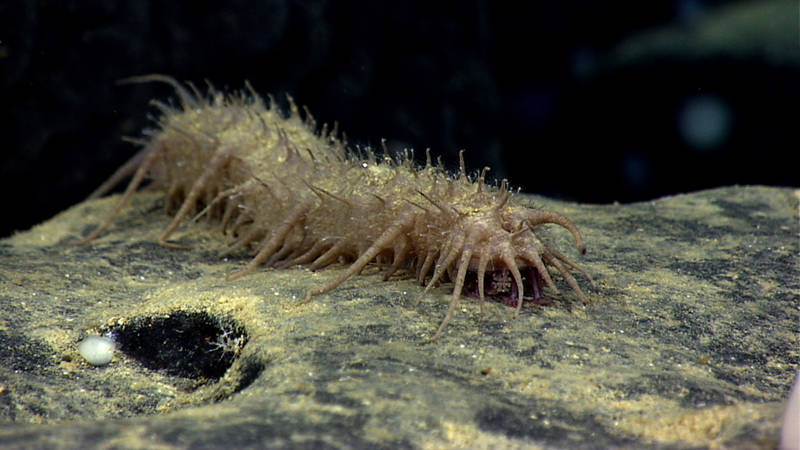
In the words of our Telepresence Team Lead, Aliens exist and they’re closer than you think! Sea cucumbers come in a variety of shapes and sizes, but almost all of them look they could be extras in the next Men in Black movie. Image courtesy of the NOAA Office of Ocean Exploration and Research, Exploring Atlantic Canyons and Seamounts 2014. Download larger version (jpg, 1.3 MB).
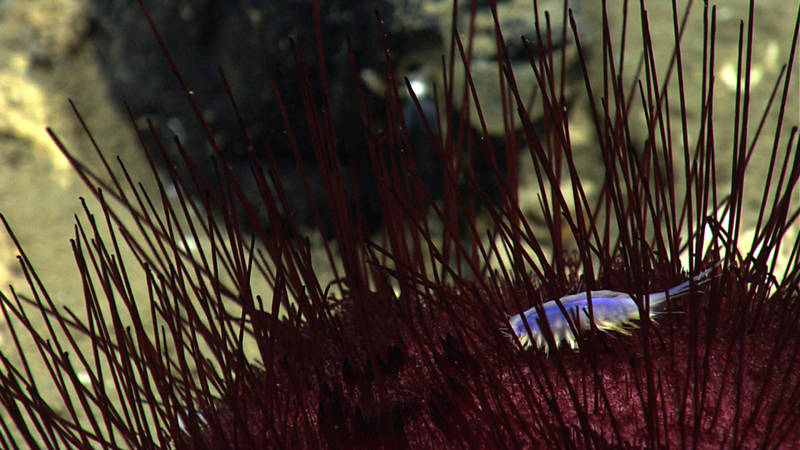
A polychaete worm resides on a pancake urchin. Image courtesy of the NOAA Office of Ocean Exploration and Research, Exploring Atlantic Canyons and Seamounts 2014. Download larger version (jpg, 1.4 MB).
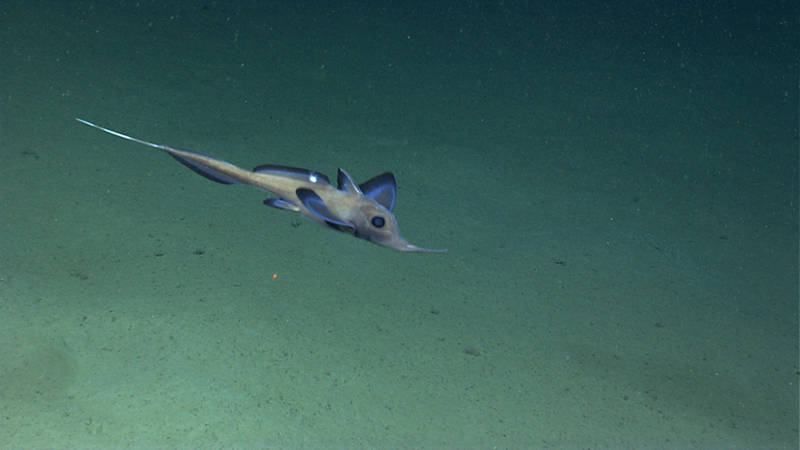
This chimaera swam by for a visit during our dive in Ryan Canyon. Image courtesy of the NOAA Office of Ocean Exploration and Research, Exploring Atlantic Canyons and Seamounts 2014. Download larger version (jpg, 1.4 MB).
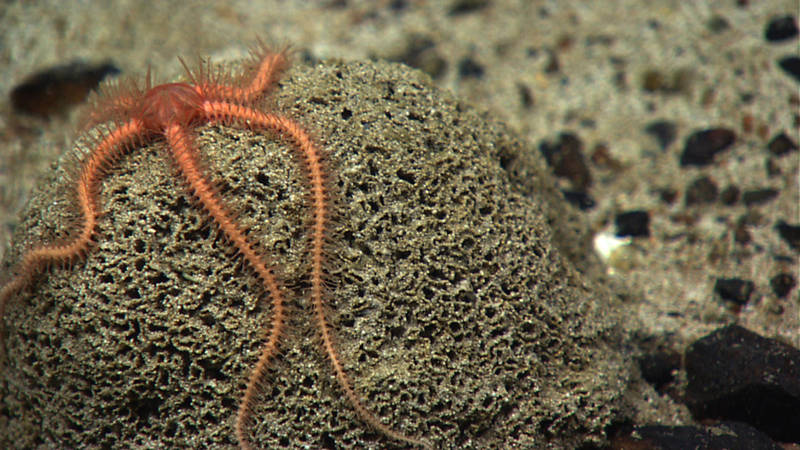
Throughout our dive on Retriever Seamount, we encountered several xenophyophores (giant unicellular organisms), many of which had brittle stars resting on top. Image courtesy of the NOAA Office of Ocean Exploration and Research, Exploring Atlantic Canyons and Seamounts 2014. Download larger version (jpg, 1.5 MB).
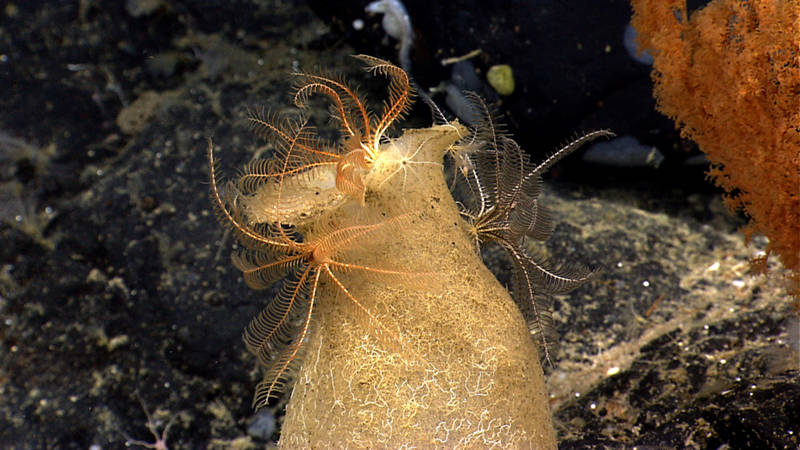
The area ROV Deep Discoverer surveyed on Retriever Seamount had a high diversity of sponges, including this one with several crinoids using the sponge to elevate their position in the water column. Image courtesy of the NOAA Office of Ocean Exploration and Research, Exploring Atlantic Canyons and Seamounts 2014. Download larger version (jpg, 1.6 MB).
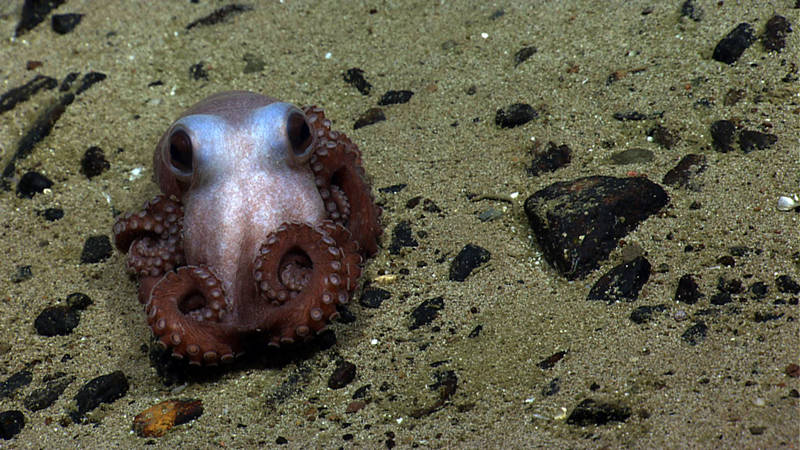
As we prepared to leave the seafloor at Physalia Seamount, ROV Deep Discoverer came across this photogenic octopus. What a great way to end a dive! Image courtesy of the NOAA Office of Ocean Exploration and Research, Exploring Atlantic Canyons and Seamounts 2014. Download larger version (jpg, 1.7 MB).
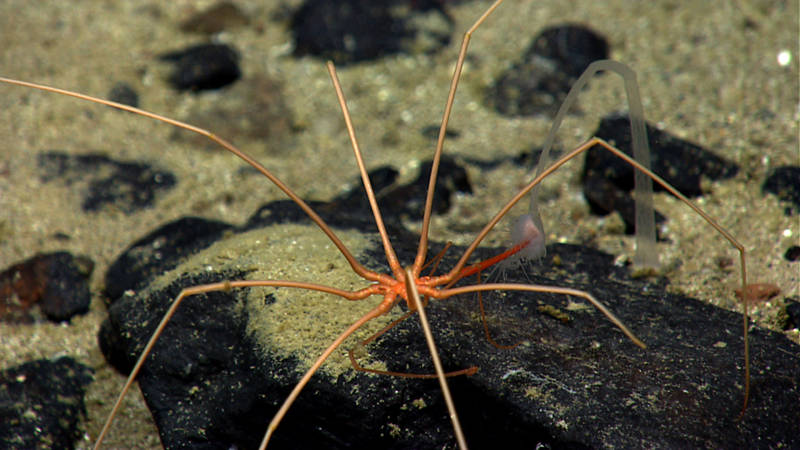
Although we saw several sea spiders during the expedition, this one feeding on a solitary hydroid was particularly exciting! Image courtesy of the NOAA Office of Ocean Exploration and Research, Exploring Atlantic Canyons and Seamounts 2014. Download larger version (jpg, 1.3 MB).
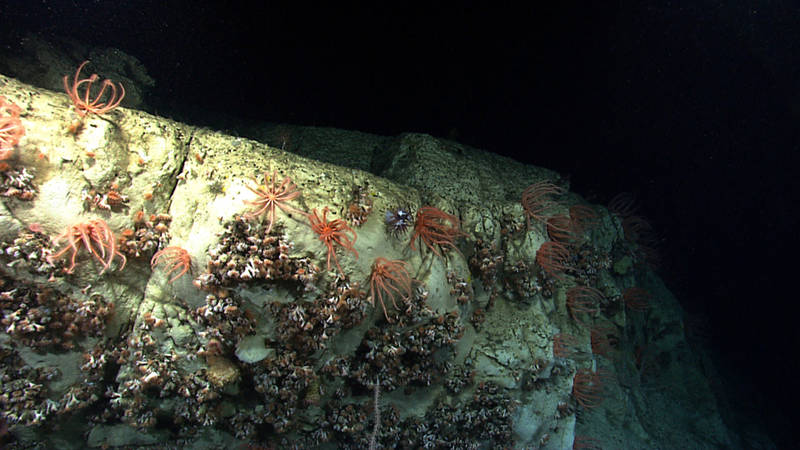
During the first-ever exploration of Nantucket Canyon, we transited up a steep wall and discovered areas of dense populations of cup corals and brisingid sea stars. Image courtesy of the NOAA Office of Ocean Exploration and Research, Exploring Atlantic Canyons and Seamounts 2014. Download larger version (jpg, 1.4 MB).
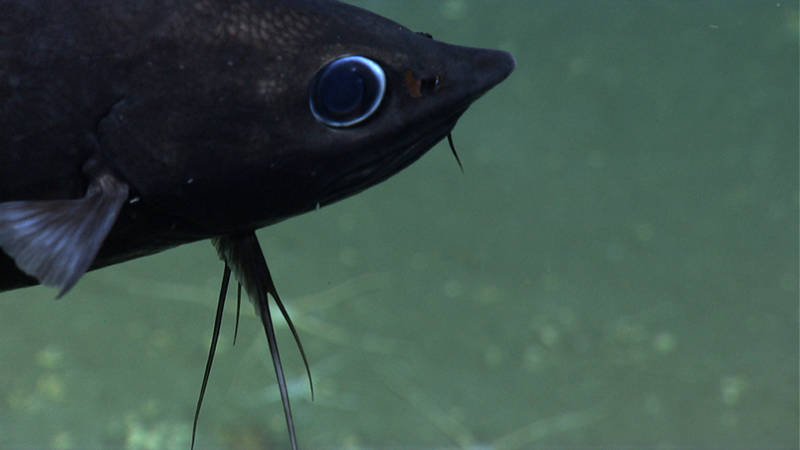
Close up of a blue hake. Image courtesy of the NOAA Office of Ocean Exploration and Research, Exploring Atlantic Canyons and Seamounts 2014. Download larger version (jpg, 1.3 MB).
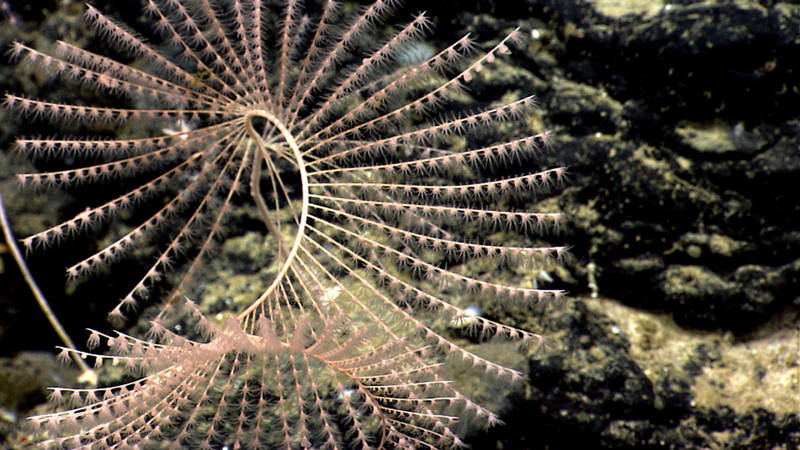
One of the most beautiful deep sea corals, iridogorgia (a type of octocoral) creates large spirals as it grows. This coral was fairly common during our dives on the New England Seamounts. Image courtesy of the NOAA Office of Ocean Exploration and Research, Exploring Atlantic Canyons and Seamounts 2014. Download larger version (jpg, 1.5 MB).
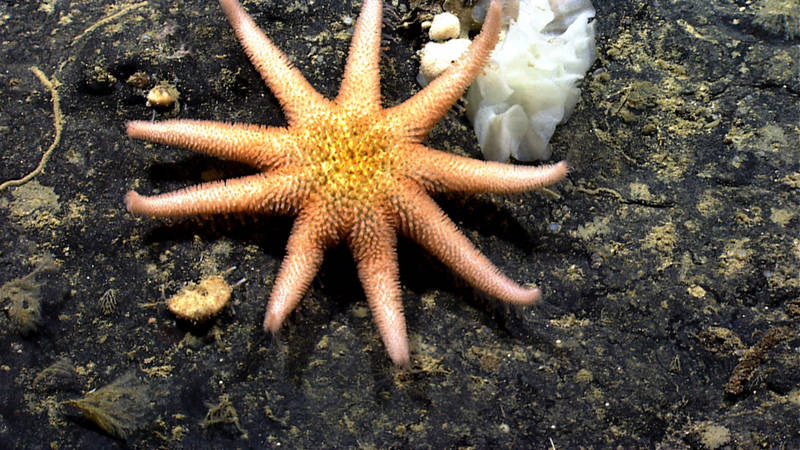
A rare sun star on Gosnold Seamount. Image courtesy of the NOAA Office of Ocean Exploration and Research, Exploring Atlantic Canyons and Seamounts 2014. Download larger version (jpg, 1.7 MB).
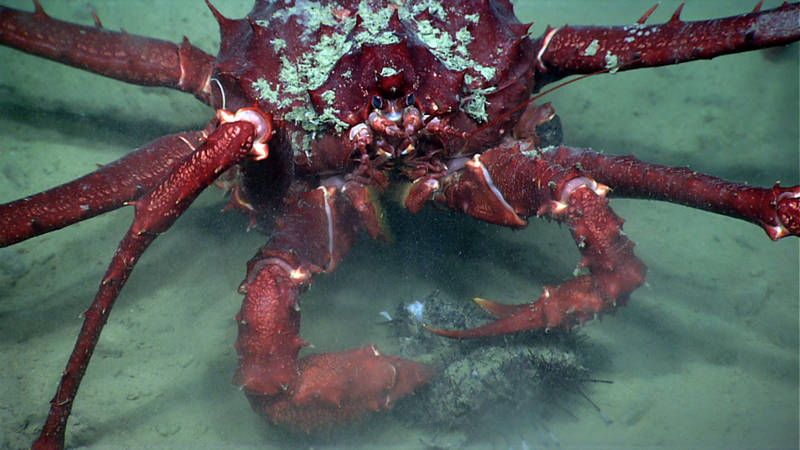
A king crab eats a pancake urchin in Ryan Canyon. Image courtesy of the NOAA Office of Ocean Exploration and Research, Exploring Atlantic Canyons and Seamounts 2014. Download larger version (jpg, 1.4 MB).
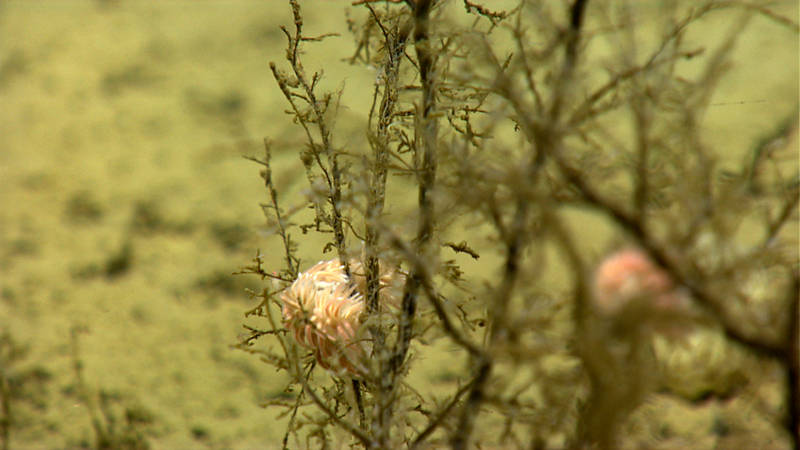
Nudibranchs on a large hydroid colony. Nudibranchs are some of my favorite animals to see while scuba diving and these were my first deep-sea nudibranchs! Image courtesy of the NOAA Office of Ocean Exploration and Research, Exploring Atlantic Canyons and Seamounts 2014. Download larger version (jpg, 1.4 MB).